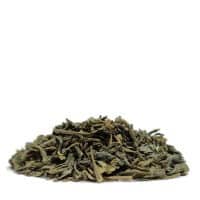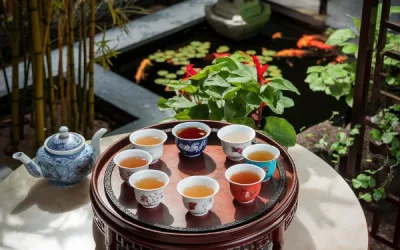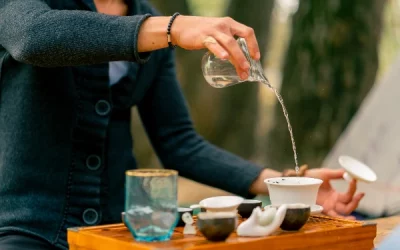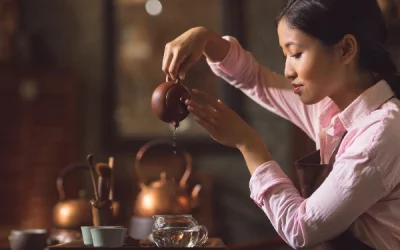Explore various types of Chinese teas, from the fragrant jasmine to robust pu-erh, each with unique flavours, aromas, and cultural significance, perfect for tea enthusiasts and casual drinkers alike.
Organic tea from China
FREE SHIPPING
For purchases over 599 kr.
Delivery
2 - 5 business days
Organic teas
Eco-friendly packaging
Missing your favorite?<br /> (Tip us)
Describe your tip
What is Chinese tea?
Tea drinking is said to have its origins in China, dating back to the Tang Dynasty.
The drink has become such an important part of Chinese cultural heritage that a Chinese proverb reads: “It is better to be deprived of food for three days than tea for one”.
According to popular legend, tea was discovered by the Chinese emperor Shen Nong in 2737 BCE when a leaf from a nearby bush fell into the water the emperor was boiling.
Chinese tea can be classified into five distinct categories: white, green, oolong, black and post-fermented.
Others add categories for fragrant and compressed teas.
All of these come from varieties of the Camellia sinensis plant.
Tea is therefore deeply rooted in Chinese culture, and has also found its way onto the list of the seven necessities of Chinese life (along with firewood, rice, oil, salt, soy sauce and vinegar).
A Chinese joke goes that you can study tea for a lifetime and still not learn the names of all the different kinds.
Most Chinese teas are grown and consumed in China, but are also exported internationally due to increasing demand worldwide.
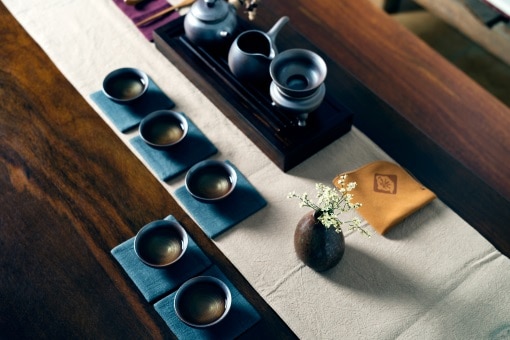

The culture around tea in China
Chinese tea culture refers to how tea is prepared, as well as the occasions it is used.
This culture in China therefore also differs from that found in European countries such as the UK, and other Asian countries such as Japan, Korea, and Vietnam.
There are four circumstances in particular that are worth highlighting where preparing tea is an important part: As a sign of respect – In the traditional part of Chinese society, members of the younger generation may show their respect for members of the older generation by offering, preparing and serving a cup of tea. Family gatherings – Offering, preparing and serving a cup of tea is also used as an important activity in a busy life where social relationships are neglected, to restore and nurture close relationships. Apologizing – tea can also be offered as part of a formal apology.
For example, children who have abused trust may use tea to express regret and submission to parents. To show gratitude and celebrate weddings – In the traditional Chinese wedding ceremony, the bride serves tea to the groom’s family, and the groom to the bride’s family.
This process symbolizes the joining of the two families.
A universe of tea
The rich history and significance of chinese tea culture
Chinese tea culture, steeped in tradition, shapes social interactions and rituals, reflecting harmony, respect, and the art of tea-making. Revered for centuries, it binds communities and embodies philosophical principles rooted in history and nature.
A comprehensive guide to the history of tea in china
Chinese tea, with its rich history dating back thousands of years, encompasses diverse types and profound cultural significance, captivating enthusiasts and learners alike.
Tea producing regions in China
China is the world’s largest producer and exporter of all types of tea.
Four regions in particular are worth highlighting; Anhui, Fujian, Guangdong and Jiangsu.
Anhui is an inland province of China, located in the southeastern part of the country.
It is famous for its beautiful mountain scenery, including Mount Huangshan, Mount Jiuhua, which is one of the four famous Buddhist mountains in China and Mount Tian Zhu.
Its climate and mountainous areas make it a great place to grow and produce tea.
Fujian is a Chinese province on the southeastern coast of the country.
The name Fujian comes from the two cities of Fuzhou and Jian’ou during the Tang Dynasty.
It is in this province that all Oolong teas are produced.
Guangdong is a province located on the southern coast of China and is sometimes known by the English name Kwangtung Province.
A popular place for the production of herbal teas, or blends of tea with herbs.
Jiangsu is a province in China on the east coast, making the area abundant with rivers and lakes.
This makes the province a great place for low grown teas.
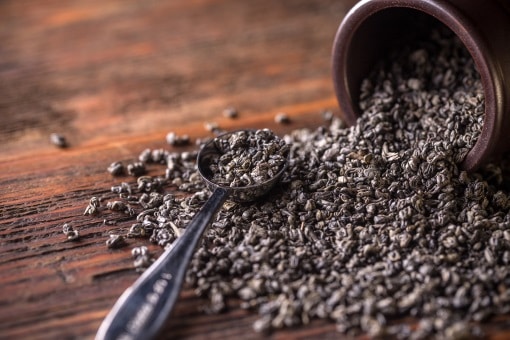
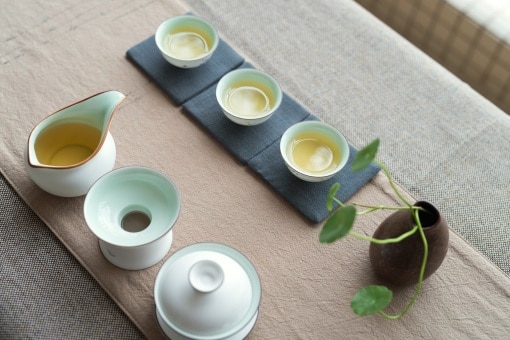
The 4 varieties of Chinese tea
In general, tea is divided into four varieties; white, green, oolong and black.
It’s important to note that the leaves used to make all four types come from the same shrub, Camellia sinensis.
It is in the manufacturing process that the different types are created.
The finest of them all is white tea (白茶, báichá).
In the harvesting process, the unripe buds are selected/picked first.
The manufacturing process is milder than the other types of tea, creating a tea that tastes amazing. Green tea (绿茶, lǜchá ) contains the youngest buds picked from the top of the plant (after the white tea is picked).
The leaves are steamed to stop the oxidation process and then heated, which can either mean being ‘fried’ in a wok or dried with hot air. Oolong, also called Black Dragon tea (乌龙, wūlóng), originates from Fujian province and is actually considered a ‘blue’ tea.
This is because it falls into the category between green and red tea.
What we (in the Western world) call“black tea“, the Chinese call red tea (红茶, hóngchá), the most famous tea in this category is pǔ’ěr (普洱).
This type of tea has the strongest flavor of all Chinese teas.

